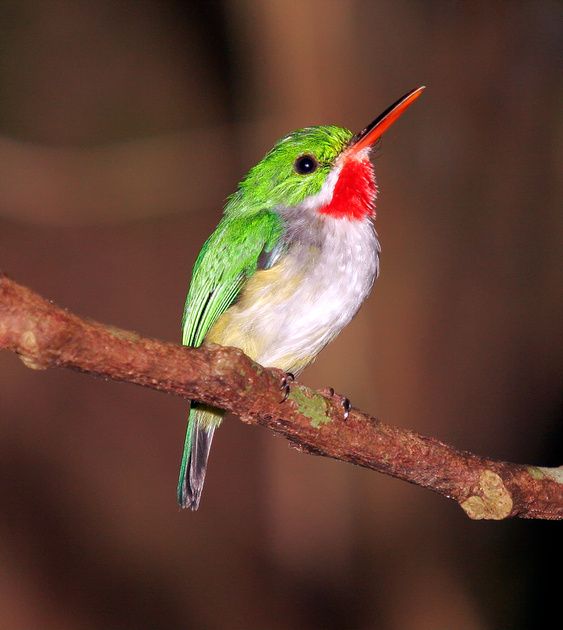The elegant trogon, (Trogon elegans) previously known as the coppery-tailed trogon, is a near passerine bird in the trogon family native to Central America. The etymology of the word trogon comes from the Greek word trōgein, meaning “to gnaw”, which describes how this species prepares its nests in trees. Elegant Trogons are medium-sized stocky, potbellied birds. They are larger than a robin, with a large, round head, a thick neck, large eyes, and a short, stout bill. Trogons perch upright with their long square-tipped tails pointing straight down. Elegant Trogons are mostly found in forested mountain canyons, particularly among sycamores, pines, and oaks. They can also be found in juniper habitats and where cottonwood-oak, Douglas-fir, and mesquite cover is limited. Throughout its range, the Elegant Trogon lives in the widest variety of habitats of any trogon, ranging from sea level to about 6,200 feet in Guatemala. Trogons are found in four mountain ranges in Arizona, the Atascosas, the Santa Ritas, the Huachuchas, and the Chiricahuas. Within those mountains, trogons select canyons with sycamore trees in the riparian area, and pines and oaks in the watersheds. Nests of trogons are mainly found in sycamores, but can also occur in oaks. Elegant Trogons are omnivorous, eating mainly insects and fruit. They eat a wide variety of insects, in particular grasshoppers and caterpillars, particularly in the breeding season. Other foods include cherries, grapes, figs, chokecherry, and buckthorn. Compared to the diet of birds that frequent the upper canopy, the Elegant Trogon’s diet contains a large proportion of animal matter. Trogons, especially males, forage in oak trees and fruit-bearing plants as well as dead or dying trees. Both parents deliver insects such as grasshoppers, caterpillars, butterflies, leafhoppers, dragonflies, bees, and wasps to their young. Elegant Trogons forage in the lower forest canopy (around 25 feet off the ground), where they sit motionless and scan neighboring branches, leaves, and trunks with almost imperceptible movements of their heads. When they spot something on a limb or in the air, they burst into flight to catch it by surprise. Song is a hoarse series of downslurred notes sometimes increasing in loudness. The notes are repeated 5–10 times with a pause before the next set. The song rate of males is generally much greater than females. Calls are generally a long drawn out note or a short series of quick harsh notes. Here so you can listen to this bird too.


The white tail looks like legs and I cannot unsee that now.
💀💀💀